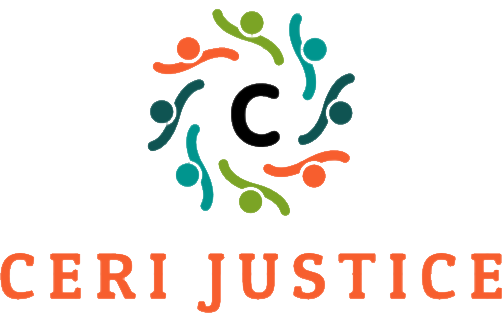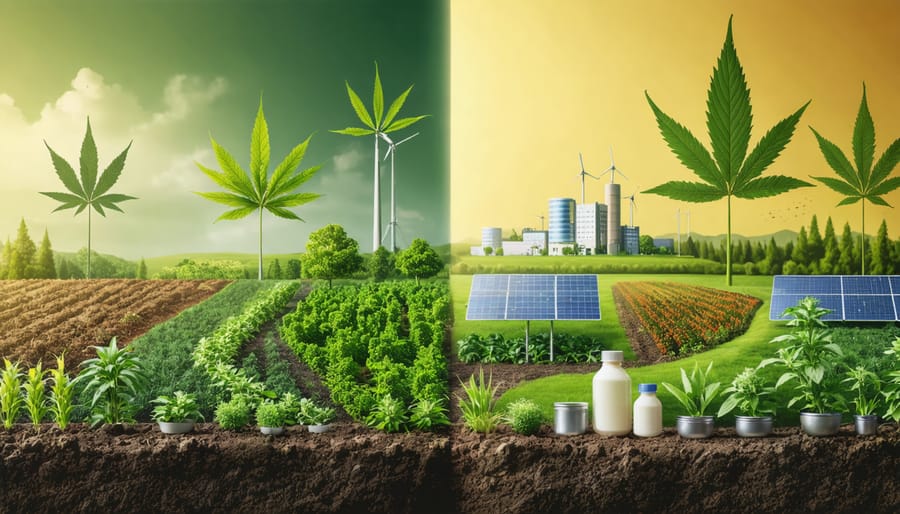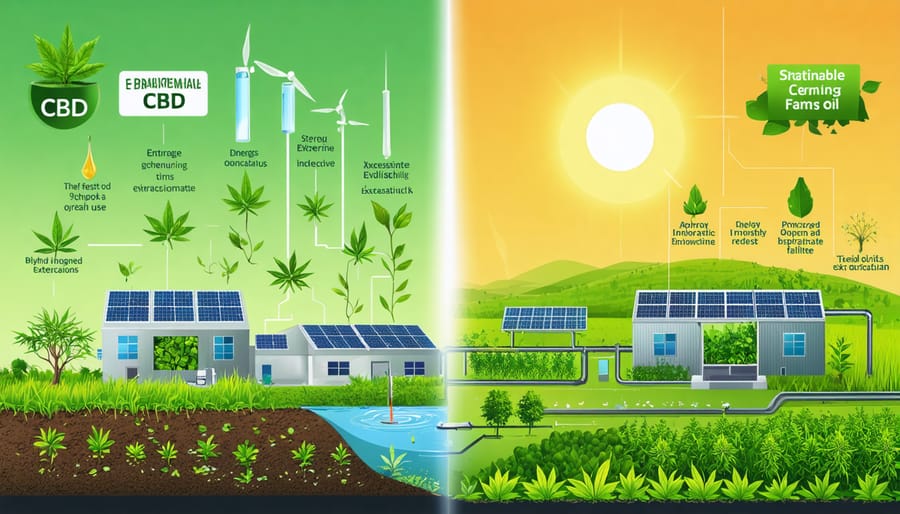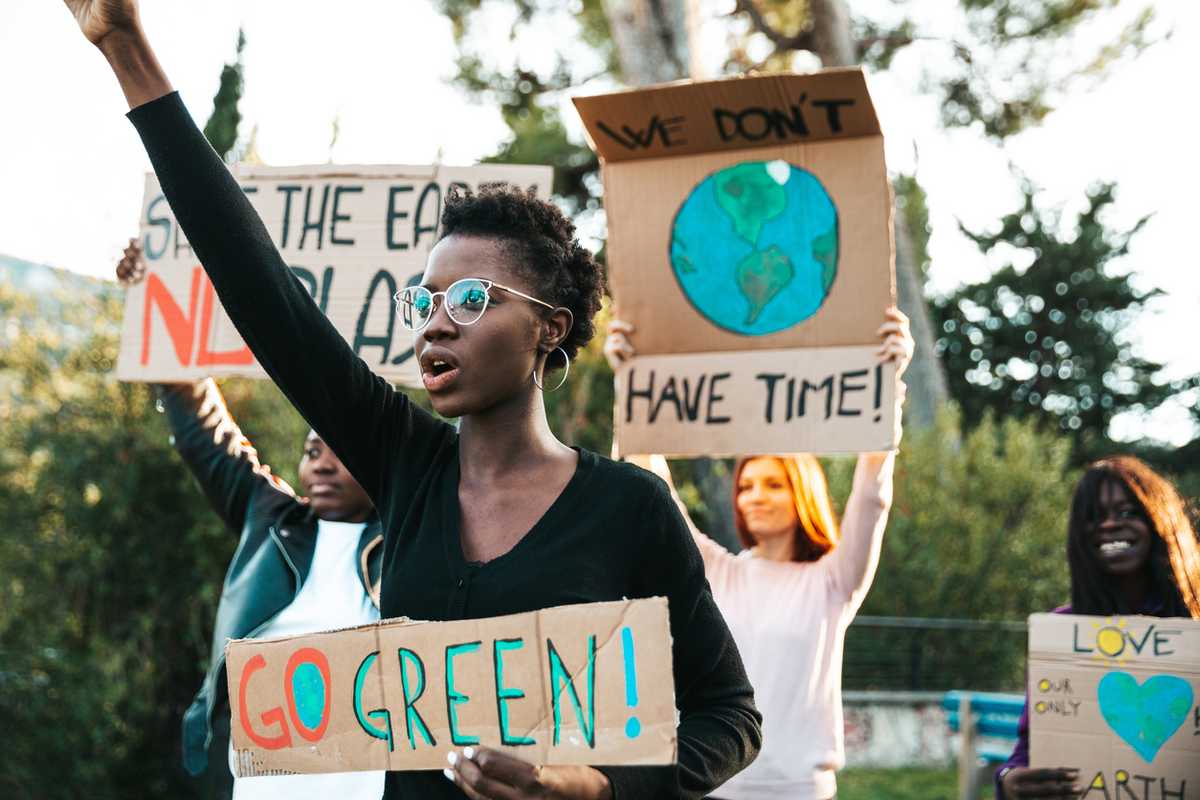The environmental impact of cannabis cultivation presents urgent challenges requiring immediate industry-wide transformation. As consumers increasingly discover where to buy CBD oil online in Canada, the ecological footprint of CBD production demands critical attention. From intensive water usage and energy consumption to chemical runoff and carbon emissions, CBD cultivation’s environmental toll threatens local ecosystems and contributes to climate change. However, innovative sustainable practices and technological advancements are revolutionizing the industry, offering hope for a greener future. Through careful analysis of current environmental challenges and emerging eco-friendly solutions, this article explores how CBD producers, consumers, and policymakers can collaborate to create a more sustainable CBD industry while maintaining product quality and accessibility. By understanding these impacts and implementing responsible practices, we can ensure CBD’s therapeutic benefits don’t come at the expense of environmental health.
Current Environmental Challenges in CBD Production
Resource-Intensive Cultivation
The CBD production environmental costs are significantly impacted by resource-intensive cultivation practices. Cannabis plants, including hemp grown for CBD, require substantial amounts of water throughout their growth cycle. A single plant can consume up to 6 gallons of water per day during peak growing season, creating considerable strain on local water resources, particularly in drought-prone regions.
Energy consumption presents another major environmental challenge. Indoor cultivation facilities, which offer better control over growing conditions, rely heavily on artificial lighting, climate control systems, and ventilation. These operations can consume up to 2,000 kilowatt-hours of electricity per pound of product, contributing to significant carbon emissions when powered by non-renewable energy sources.
Land use efficiency is also a crucial consideration. While hemp is generally considered a space-efficient crop, the increasing demand for CBD has led to expanded cultivation areas. This expansion can sometimes result in habitat disruption and soil degradation if not managed sustainably. Traditional farming methods may deplete soil nutrients, requiring additional fertilizer inputs and potentially creating runoff issues.
To address these challenges, the industry is increasingly adopting sustainable practices such as water recycling systems, energy-efficient LED lighting, and regenerative farming techniques. These innovations demonstrate that while resource demands are high, there are viable pathways to reduce the environmental footprint of CBD cultivation.
Chemical Runoff and Soil Impact
The cultivation of hemp for CBD production raises significant concerns regarding soil health and water quality due to agricultural chemical use. While hemp is naturally resistant to many pests, some large-scale operations still rely on pesticides and synthetic fertilizers to maximize yields. These practices can lead to chemical runoff during rainfall or irrigation, potentially contaminating local water systems and disrupting aquatic ecosystems.
Recent studies have shown that intensive CBD hemp farming can impact soil quality through nutrient depletion and organic matter reduction. Understanding these pesticide regulations and impacts is crucial for sustainable cultivation practices. The accumulation of agricultural chemicals in soil can alter its microbial composition, affecting long-term fertility and biodiversity.
However, innovative solutions are emerging within the industry. Many farmers are adopting organic cultivation methods, implementing crop rotation systems, and using natural pest management strategies. Cover cropping between hemp seasons helps restore soil health, while precision irrigation systems minimize runoff risks. Some producers are also experimenting with beneficial insects and companion planting to reduce pesticide dependency.
To protect soil and water resources, the CBD industry must prioritize sustainable agricultural practices. This includes implementing buffer zones near water sources, using organic fertilizers, and maintaining soil testing programs to prevent over-application of nutrients. These measures not only protect the environment but often result in higher-quality CBD products and more resilient farming operations.
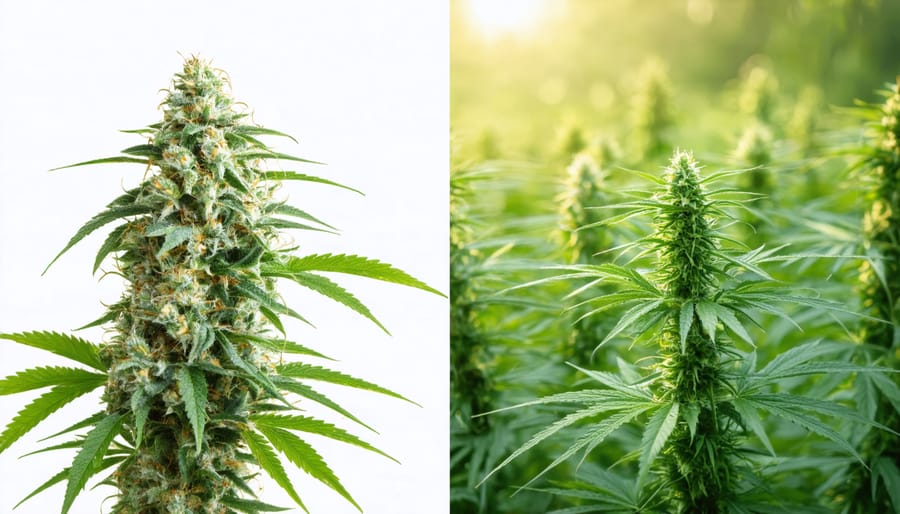
Sustainable CBD Production Methods
Organic Farming Practices
Organic farming practices form the cornerstone of sustainable CBD cultivation, offering a chemical-free approach that benefits both the environment and consumer health. These methods prioritize soil health through natural composting, crop rotation, and beneficial insect integration, creating a balanced ecosystem that supports robust plant growth without synthetic fertilizers or pesticides.
Key organic practices include the use of cover crops, which prevent soil erosion and naturally enrich the soil with nutrients. Farmers employ companion planting techniques, strategically placing complementary plants together to naturally deter pests and enhance growth. Natural pest management strategies, such as introducing ladybugs and praying mantises, help control harmful insects without chemical interventions.
Water conservation plays a crucial role in organic CBD farming, with many cultivators implementing drip irrigation systems and moisture-retaining mulching practices. These methods not only conserve water but also suppress weed growth naturally, eliminating the need for chemical herbicides.
The benefits of organic CBD cultivation extend beyond environmental protection. Organic practices lead to higher soil carbon sequestration, contributing to climate change mitigation. Additionally, these methods preserve biodiversity, protect pollinators, and maintain cleaner waterways by eliminating chemical runoff. For consumers, organically grown CBD often results in purer products free from synthetic residues, while farmers benefit from improved soil fertility and reduced input costs over time.
Energy-Efficient Processing
The CBD industry is increasingly embracing sustainable energy practices to minimize its environmental footprint during processing and extraction. Leading manufacturers are transitioning to renewable energy sources like solar and wind power to run their facilities, significantly reducing carbon emissions associated with CBD production.
Modern extraction methods are evolving to become more energy-efficient while maintaining product quality. CO2 extraction, though initially energy-intensive, now incorporates heat recovery systems and process optimization to reduce overall energy consumption. Some facilities have implemented closed-loop systems that recycle and reuse CO2, minimizing both resource waste and energy requirements.
Innovation in processing equipment has led to the development of energy-efficient technologies that require less power while increasing yield. These include advanced heat exchangers, improved insulation systems, and smart automation controls that optimize energy usage during different processing stages.
Many producers are also investing in LED lighting systems for indoor cultivation, which consume up to 40% less energy than traditional growing lights. Combined with energy management systems and real-time monitoring, these improvements are helping facilities reduce their energy consumption while maintaining high-quality CBD production.
The industry’s shift towards energy-efficient processing not only reduces operational costs but also addresses growing consumer demand for sustainably produced CBD products, creating a win-win situation for both businesses and the environment.
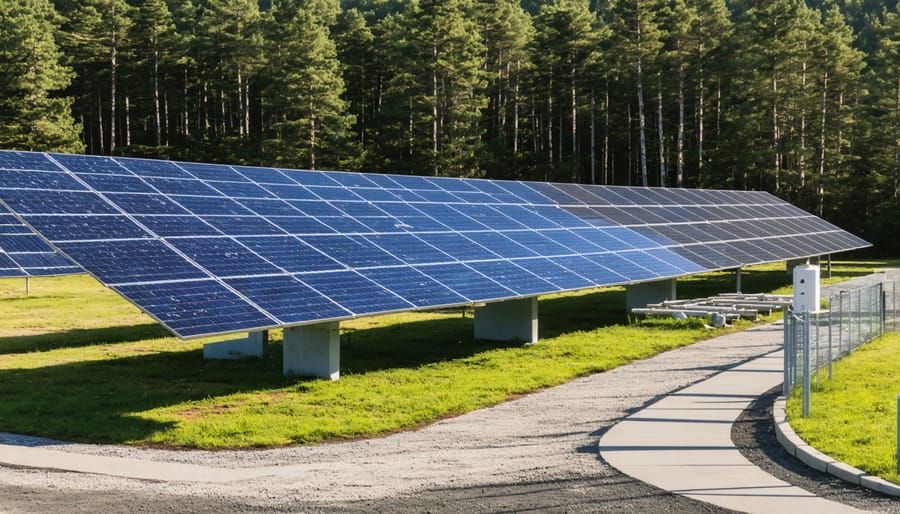
Water Conservation Strategies
Water management stands as a critical component in sustainable CBD cultivation, with innovative conservation strategies playing a vital role in reducing environmental impact. Modern hemp cultivation facilities are implementing closed-loop irrigation systems that capture, filter, and reuse water throughout the growing cycle, significantly reducing water consumption by up to 70% compared to traditional agricultural methods.
Advanced drip irrigation technologies deliver precise amounts of water directly to plant roots, minimizing waste and maximizing efficiency. These systems often incorporate soil moisture sensors and automated controls that optimize water delivery based on real-time plant needs. Many facilities are also harvesting rainwater and utilizing condensation collection systems to supplement their water supply, further reducing dependence on local water resources.
Water filtration and purification systems are essential components of sustainable CBD production. These systems remove contaminants and adjust pH levels, allowing water to be recycled multiple times before requiring replacement. Some facilities have integrated constructed wetlands into their operations, using natural biological processes to filter and clean water while creating additional wildlife habitat.
For indoor cultivation, humidity control systems capture and recycle atmospheric moisture, while hydroponic and aeroponic systems use up to 95% less water than conventional soil-based methods. These water-saving techniques not only conserve precious resources but also reduce operational costs and enhance the overall sustainability of CBD production.
Packaging and Waste Management
Eco-Friendly Packaging Solutions
The CBD industry is increasingly adopting innovative packaging solutions to minimize environmental impact and promote plastic pollution reduction. Leading manufacturers are transitioning to hemp-based packaging materials, which leverage the same plant used in CBD production to create biodegradable containers and shipping materials. These hemp-based alternatives decompose naturally within 6-8 months, compared to traditional plastics that persist for centuries.
Glass containers with recycled content have become another cornerstone of sustainable CBD packaging, offering both product preservation and environmental benefits. These containers can be infinitely recycled without quality loss, making them an excellent choice for premium CBD products. Many companies are also implementing minimalist designs that reduce material usage while maintaining product integrity.
Post-consumer recycled (PCR) materials are gaining traction, with some brands achieving up to 90% PCR content in their packaging. Innovative solutions like dissolvable packaging peanuts, bamboo-based containers, and mushroom packaging provide protective cushioning while completely biodegrading after use.
Companies are also redesigning their shipping methods, adopting right-sized packaging to minimize waste and implementing take-back programs that encourage customers to return empty containers for proper recycling. These initiatives not only reduce environmental impact but also create closed-loop systems that benefit both businesses and the planet.
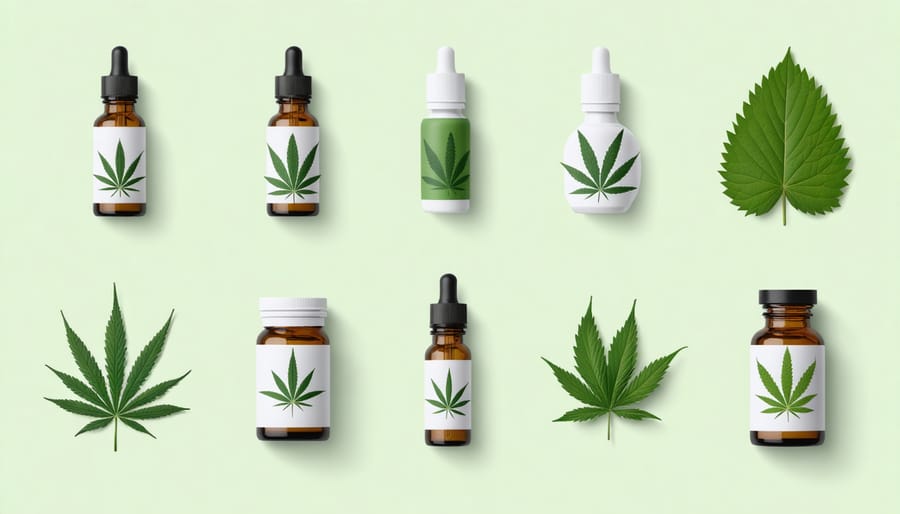
Recycling and Disposal Programs
The CBD industry’s commitment to environmental stewardship extends to comprehensive recycling and disposal programs that address the full lifecycle of products. Leading manufacturers have implemented take-back programs for CBD packaging, including glass tincture bottles, plastic containers, and cardboard packaging. These initiatives typically involve partnerships with specialized recycling facilities equipped to handle cannabis-related materials.
Proper disposal of CBD products requires careful consideration of local regulations and environmental impact. Unused CBD oils should never be poured down drains or disposed of in regular trash, as they can contaminate water systems and soil. Instead, many communities offer specialized collection events or designated drop-off locations for cannabis-related products and packaging.
Several innovative recycling programs have emerged within the industry. Some companies use blockchain technology to track packaging materials throughout their lifecycle, ensuring proper recycling and reducing waste. Others have introduced biodegradable packaging alternatives or implemented closed-loop systems where packaging materials are continuously reused and recycled.
Consumer education plays a crucial role in successful recycling programs. Many CBD manufacturers now include clear disposal instructions on their packaging and maintain educational resources on their websites. Some brands incentivize recycling by offering discounts or loyalty points to customers who return empty containers, creating a win-win situation for both environmental conservation and customer retention.
These initiatives demonstrate the industry’s growing recognition of its environmental responsibilities and commitment to sustainable practices throughout the product lifecycle.
Industry Regulations and Certifications
The CBD industry operates under increasingly stringent environmental regulations and certification frameworks designed to ensure sustainable practices throughout the supply chain. Leading certification programs like the USDA Organic certification set comprehensive standards for soil health, water conservation, and pesticide-free cultivation. These certifications require regular audits and documentation of environmental management practices.
Beyond organic certification, the emergence of specialized hemp-specific programs has created additional accountability measures. The Hemp Industries Association (HIA) and other industry organizations have developed sustainability guidelines that address carbon footprint reduction, waste management, and biodiversity preservation in hemp cultivation.
Environmental compliance in CBD production extends to manufacturing facilities, where Good Manufacturing Practice (GMP) standards intersect with environmental requirements. These regulations govern waste disposal, air quality control, and water treatment processes. Companies must maintain detailed environmental impact assessments and implement mitigation strategies to maintain their operating licenses.
Third-party certification programs focusing on regenerative agriculture practices have gained prominence in the CBD sector. These programs evaluate factors such as soil carbon sequestration, ecosystem restoration, and sustainable water management. Producers who meet these standards can demonstrate their commitment to environmental stewardship through certification marks on their products.
Energy efficiency certifications have become increasingly important as the industry grows. Programs like LEED certification for manufacturing facilities and Energy Star ratings for processing equipment help companies reduce their environmental impact while often resulting in operational cost savings.
For international trade, CBD producers must comply with various environmental standards across different jurisdictions. The European Union’s organic regulations and Good Agricultural and Collection Practice (GACP) guidelines are particularly influential in shaping global standards for sustainable hemp cultivation and CBD extraction.
These regulatory frameworks and certification programs continue to evolve, driving innovation in sustainable practices while providing consumers with transparent information about environmental impact. Forward-thinking companies often exceed minimum requirements, viewing robust environmental compliance as both a responsibility and a competitive advantage.
Future Outlook and Innovations
The CBD industry stands at the cusp of transformative innovations that promise to revolutionize sustainable practices. Emerging technologies in cultivation are leading the way, with advanced LED lighting systems reducing energy consumption by up to 40% compared to traditional growing methods. Vertical farming solutions are maximizing space efficiency while minimizing land use, particularly beneficial in urban settings.
Biotechnology breakthroughs are enabling the development of more resilient hemp varieties that require fewer resources to cultivate. Scientists are working on strains that need less water and pesticides while maintaining high CBD yields. This genetic optimization could significantly reduce the environmental footprint of CBD production.
Water conservation technologies are evolving rapidly, with sophisticated irrigation systems that use sensors and AI to deliver precise amounts of water to plants. Some innovative facilities are implementing closed-loop water systems, recycling up to 95% of water used in cultivation and processing.
Packaging innovations are addressing waste concerns through biodegradable materials and zero-waste designs. Companies are experimenting with hemp-based packaging solutions, creating a circular economy where the plant itself provides sustainable packaging materials. Smart packaging technologies are also emerging, helping to extend product shelf life and reduce waste.
The future of CBD extraction looks promising with the development of solvent-free methods and energy-efficient processes. Supercritical CO2 extraction is becoming more refined, while new techniques using ultrasound and microwave assistance are showing potential for reducing energy consumption.
Industry leaders are increasingly adopting blockchain technology to ensure transparency in supply chains and verify sustainable practices. This technology enables consumers to trace their CBD products from seed to shelf, promoting accountability and encouraging sustainable practices throughout the production cycle.
Looking ahead, the integration of renewable energy sources, particularly solar and wind power, is expected to become standard practice in CBD production facilities. These developments, combined with increasing consumer demand for sustainable products, suggest a future where environmental responsibility and economic success go hand in hand in the CBD industry.
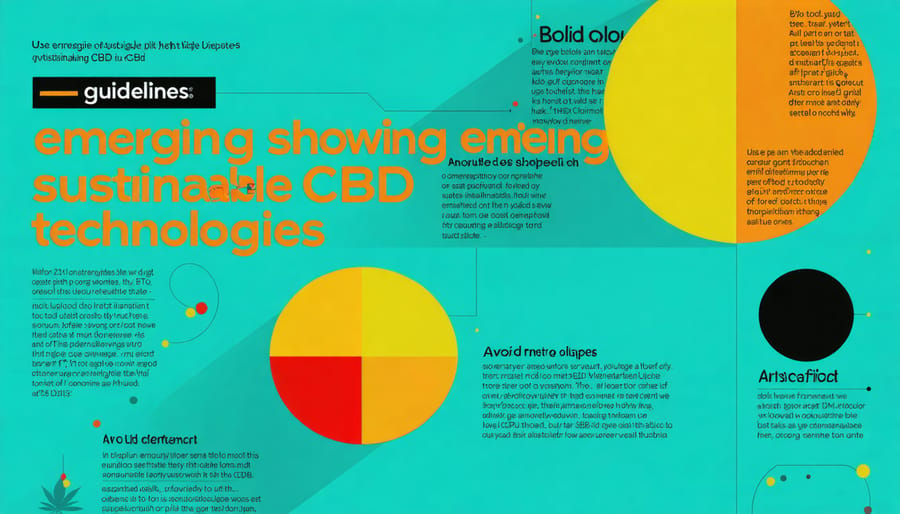
The environmental impact of CBD production presents both challenges and opportunities for creating a more sustainable industry. Through our examination of current practices and emerging solutions, it’s clear that the CBD sector stands at a crucial crossroads. The industry’s rapid growth demands immediate attention to environmental stewardship and responsible resource management.
By implementing sustainable cultivation methods, embracing renewable energy sources, and adopting eco-friendly packaging solutions, the CBD industry can significantly reduce its ecological footprint. Water conservation techniques, organic farming practices, and efficient extraction methods have already demonstrated promising results in minimizing environmental impact while maintaining product quality.
The path forward requires collective action from all stakeholders – producers, manufacturers, retailers, and consumers. Companies must prioritize environmental certification programs, invest in green technologies, and establish transparent supply chains. Consumers can drive positive change by supporting environmentally responsible brands and demanding sustainable products.
As we look to the future, the CBD industry has the potential to become a model for sustainable agricultural and manufacturing practices. By embracing circular economy principles, reducing waste, and protecting biodiversity, the sector can contribute to global environmental conservation efforts while meeting growing market demands.
The time for action is now. We must work together to implement these sustainable practices, support innovation in eco-friendly technologies, and advocate for policies that promote environmental responsibility in the CBD industry. Through conscious choices and committed action, we can ensure that the CBD industry grows in harmony with our planet’s ecological needs.
